+ Open data
Open data
- Basic information
Basic information
| Entry | Database: PDB / ID: 4cbx | ||||||
|---|---|---|---|---|---|---|---|
| Title | Crystal structure of Plasmodium berghei actin II | ||||||
 Components Components |
| ||||||
 Keywords Keywords | MOTOR PROTEIN / MALARIA / MOTILITY / PARASITE | ||||||
| Function / homology |  Function and homology information Function and homology informationpositive regulation of development of symbiont in host / exit from host cell / male gamete generation / Caspase-mediated cleavage of cytoskeletal proteins / striated muscle atrophy / regulation of establishment of T cell polarity / regulation of plasma membrane raft polarization / regulation of receptor clustering / renal protein absorption / positive regulation of keratinocyte apoptotic process ...positive regulation of development of symbiont in host / exit from host cell / male gamete generation / Caspase-mediated cleavage of cytoskeletal proteins / striated muscle atrophy / regulation of establishment of T cell polarity / regulation of plasma membrane raft polarization / regulation of receptor clustering / renal protein absorption / positive regulation of keratinocyte apoptotic process / positive regulation of protein processing in phagocytic vesicle / positive regulation of actin nucleation / phosphatidylinositol 3-kinase catalytic subunit binding / actin cap / regulation of podosome assembly / myosin II binding / cilium organization / host-mediated suppression of symbiont invasion / actin filament severing / actin filament depolymerization / actin filament capping / cardiac muscle cell contraction / relaxation of cardiac muscle / podosome / phagocytosis, engulfment / hepatocyte apoptotic process / sarcoplasm / cilium assembly / vesicle-mediated transport / phagocytic vesicle / response to muscle stretch / actin filament polymerization / Neutrophil degranulation / protein destabilization / cellular response to type II interferon / Hydrolases; Acting on acid anhydrides; Acting on acid anhydrides to facilitate cellular and subcellular movement / actin filament binding / lamellipodium / actin cytoskeleton organization / amyloid fibril formation / cytoskeleton / calcium ion binding / ATP hydrolysis activity / extracellular space / extracellular region / ATP binding / nucleus / plasma membrane / cytosol / cytoplasm Similarity search - Function | ||||||
| Biological species |   | ||||||
| Method |  X-RAY DIFFRACTION / X-RAY DIFFRACTION /  MOLECULAR REPLACEMENT / Resolution: 2.2 Å MOLECULAR REPLACEMENT / Resolution: 2.2 Å | ||||||
 Authors Authors | Vahokoski, J. / Bhargav, S.P. / Desfosses, A. / Andreadaki, M. / Kumpula, E.P. / Ignatev, A. / Munico Martinez, S. / Lepper, S. / Frischknecht, F. / Siden-Kiamos, I. ...Vahokoski, J. / Bhargav, S.P. / Desfosses, A. / Andreadaki, M. / Kumpula, E.P. / Ignatev, A. / Munico Martinez, S. / Lepper, S. / Frischknecht, F. / Siden-Kiamos, I. / Sachse, C. / Kursula, I. | ||||||
 Citation Citation |  Journal: PLoS Pathog / Year: 2014 Journal: PLoS Pathog / Year: 2014Title: Structural differences explain diverse functions of Plasmodium actins. Authors: Juha Vahokoski / Saligram Prabhakar Bhargav / Ambroise Desfosses / Maria Andreadaki / Esa-Pekka Kumpula / Silvia Muñico Martinez / Alexander Ignatev / Simone Lepper / Friedrich Frischknecht ...Authors: Juha Vahokoski / Saligram Prabhakar Bhargav / Ambroise Desfosses / Maria Andreadaki / Esa-Pekka Kumpula / Silvia Muñico Martinez / Alexander Ignatev / Simone Lepper / Friedrich Frischknecht / Inga Sidén-Kiamos / Carsten Sachse / Inari Kursula /    Abstract: Actins are highly conserved proteins and key players in central processes in all eukaryotic cells. The two actins of the malaria parasite are among the most divergent eukaryotic actins and also ...Actins are highly conserved proteins and key players in central processes in all eukaryotic cells. The two actins of the malaria parasite are among the most divergent eukaryotic actins and also differ from each other more than isoforms in any other species. Microfilaments have not been directly observed in Plasmodium and are presumed to be short and highly dynamic. We show that actin I cannot complement actin II in male gametogenesis, suggesting critical structural differences. Cryo-EM reveals that Plasmodium actin I has a unique filament structure, whereas actin II filaments resemble canonical F-actin. Both Plasmodium actins hydrolyze ATP more efficiently than α-actin, and unlike any other actin, both parasite actins rapidly form short oligomers induced by ADP. Crystal structures of both isoforms pinpoint several structural changes in the monomers causing the unique polymerization properties. Inserting the canonical D-loop to Plasmodium actin I leads to the formation of long filaments in vitro. In vivo, this chimera restores gametogenesis in parasites lacking actin II, suggesting that stable filaments are required for exflagellation. Together, these data underline the divergence of eukaryotic actins and demonstrate how structural differences in the monomers translate into filaments with different properties, implying that even eukaryotic actins have faced different evolutionary pressures and followed different paths for developing their polymerization properties. | ||||||
| History |
|
- Structure visualization
Structure visualization
| Structure viewer | Molecule:  Molmil Molmil Jmol/JSmol Jmol/JSmol |
|---|
- Downloads & links
Downloads & links
- Download
Download
| PDBx/mmCIF format |  4cbx.cif.gz 4cbx.cif.gz | 220.4 KB | Display |  PDBx/mmCIF format PDBx/mmCIF format |
|---|---|---|---|---|
| PDB format |  pdb4cbx.ent.gz pdb4cbx.ent.gz | 174 KB | Display |  PDB format PDB format |
| PDBx/mmJSON format |  4cbx.json.gz 4cbx.json.gz | Tree view |  PDBx/mmJSON format PDBx/mmJSON format | |
| Others |  Other downloads Other downloads |
-Validation report
| Summary document |  4cbx_validation.pdf.gz 4cbx_validation.pdf.gz | 783.6 KB | Display |  wwPDB validaton report wwPDB validaton report |
|---|---|---|---|---|
| Full document |  4cbx_full_validation.pdf.gz 4cbx_full_validation.pdf.gz | 787.9 KB | Display | |
| Data in XML |  4cbx_validation.xml.gz 4cbx_validation.xml.gz | 23.5 KB | Display | |
| Data in CIF |  4cbx_validation.cif.gz 4cbx_validation.cif.gz | 34 KB | Display | |
| Arichive directory |  https://data.pdbj.org/pub/pdb/validation_reports/cb/4cbx https://data.pdbj.org/pub/pdb/validation_reports/cb/4cbx ftp://data.pdbj.org/pub/pdb/validation_reports/cb/4cbx ftp://data.pdbj.org/pub/pdb/validation_reports/cb/4cbx | HTTPS FTP |
-Related structure data
| Related structure data |  2572C 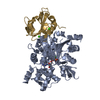 4cbuC 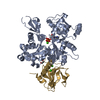 4cbwC 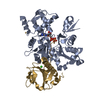 1p8zS C: citing same article ( S: Starting model for refinement |
|---|---|
| Similar structure data |
- Links
Links
- Assembly
Assembly
| Deposited unit | 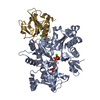
| ||||||||
|---|---|---|---|---|---|---|---|---|---|
| 1 |
| ||||||||
| Unit cell |
|
- Components
Components
-Protein , 2 types, 2 molecules AG
| #1: Protein | Mass: 42856.062 Da / Num. of mol.: 1 Source method: isolated from a genetically manipulated source Source: (gene. exp.)   |
|---|---|
| #2: Protein | Mass: 14211.929 Da / Num. of mol.: 1 / Fragment: G1 DOMAIN, RESIDUES 50-174 Source method: isolated from a genetically manipulated source Source: (gene. exp.)   |
-Non-polymers , 6 types, 356 molecules 










| #3: Chemical | ChemComp-ATP / | ||||||||
|---|---|---|---|---|---|---|---|---|---|
| #4: Chemical | | #5: Chemical | ChemComp-NA / | #6: Chemical | #7: Chemical | ChemComp-PO4 / | #8: Water | ChemComp-HOH / | |
-Experimental details
-Experiment
| Experiment | Method:  X-RAY DIFFRACTION / Number of used crystals: 1 X-RAY DIFFRACTION / Number of used crystals: 1 |
|---|
- Sample preparation
Sample preparation
| Crystal | Density Matthews: 2.6 Å3/Da / Density % sol: 52 % / Description: NONE |
|---|---|
| Crystal grow | pH: 6.5 Details: 18% (W/V) PEG 8000, 0.2 M AMMONIUM SULFATE, 0.1 M BIS-TRIS PROPANE PH 6.5 |
-Data collection
| Diffraction | Mean temperature: 100 K |
|---|---|
| Diffraction source | Source:  ROTATING ANODE / Type: BRUKER AXS MICROSTAR / Wavelength: 1.54 ROTATING ANODE / Type: BRUKER AXS MICROSTAR / Wavelength: 1.54 |
| Detector | Type: PLATINUM135 / Detector: CCD / Date: Aug 17, 2012 |
| Radiation | Protocol: SINGLE WAVELENGTH / Monochromatic (M) / Laue (L): M / Scattering type: x-ray |
| Radiation wavelength | Wavelength: 1.54 Å / Relative weight: 1 |
| Reflection | Resolution: 2.2→32 Å / Num. obs: 29458 / % possible obs: 99.4 % / Observed criterion σ(I): -3 / Redundancy: 3.6 % / Biso Wilson estimate: 27.62 Å2 / Rmerge(I) obs: 0.16 / Net I/σ(I): 5.6 |
| Reflection shell | Resolution: 2.2→2.25 Å / Redundancy: 2.3 % / Rmerge(I) obs: 0.79 / Mean I/σ(I) obs: 0.9 / % possible all: 95.2 |
- Processing
Processing
| Software |
| ||||||||||||||||||||||||||||||||||||||||||||||||||||||||||||||||||||||||||||||||||||||||||||||||||||||||||||||||||||||||||||||||||||||||||||||||||||||||||||||||||||||||||||||||||||||||||||||||||||||||
|---|---|---|---|---|---|---|---|---|---|---|---|---|---|---|---|---|---|---|---|---|---|---|---|---|---|---|---|---|---|---|---|---|---|---|---|---|---|---|---|---|---|---|---|---|---|---|---|---|---|---|---|---|---|---|---|---|---|---|---|---|---|---|---|---|---|---|---|---|---|---|---|---|---|---|---|---|---|---|---|---|---|---|---|---|---|---|---|---|---|---|---|---|---|---|---|---|---|---|---|---|---|---|---|---|---|---|---|---|---|---|---|---|---|---|---|---|---|---|---|---|---|---|---|---|---|---|---|---|---|---|---|---|---|---|---|---|---|---|---|---|---|---|---|---|---|---|---|---|---|---|---|---|---|---|---|---|---|---|---|---|---|---|---|---|---|---|---|---|---|---|---|---|---|---|---|---|---|---|---|---|---|---|---|---|---|---|---|---|---|---|---|---|---|---|---|---|---|---|---|---|---|
| Refinement | Method to determine structure:  MOLECULAR REPLACEMENT MOLECULAR REPLACEMENTStarting model: PDB ENTRY 1P8Z Resolution: 2.2→31.907 Å / SU ML: 0.25 / σ(F): 1.36 / Phase error: 22.27 / Stereochemistry target values: ML
| ||||||||||||||||||||||||||||||||||||||||||||||||||||||||||||||||||||||||||||||||||||||||||||||||||||||||||||||||||||||||||||||||||||||||||||||||||||||||||||||||||||||||||||||||||||||||||||||||||||||||
| Solvent computation | Shrinkage radii: 0.9 Å / VDW probe radii: 1.11 Å / Solvent model: FLAT BULK SOLVENT MODEL | ||||||||||||||||||||||||||||||||||||||||||||||||||||||||||||||||||||||||||||||||||||||||||||||||||||||||||||||||||||||||||||||||||||||||||||||||||||||||||||||||||||||||||||||||||||||||||||||||||||||||
| Refinement step | Cycle: LAST / Resolution: 2.2→31.907 Å
| ||||||||||||||||||||||||||||||||||||||||||||||||||||||||||||||||||||||||||||||||||||||||||||||||||||||||||||||||||||||||||||||||||||||||||||||||||||||||||||||||||||||||||||||||||||||||||||||||||||||||
| Refine LS restraints |
| ||||||||||||||||||||||||||||||||||||||||||||||||||||||||||||||||||||||||||||||||||||||||||||||||||||||||||||||||||||||||||||||||||||||||||||||||||||||||||||||||||||||||||||||||||||||||||||||||||||||||
| LS refinement shell |
| ||||||||||||||||||||||||||||||||||||||||||||||||||||||||||||||||||||||||||||||||||||||||||||||||||||||||||||||||||||||||||||||||||||||||||||||||||||||||||||||||||||||||||||||||||||||||||||||||||||||||
| Refinement TLS params. | Method: refined / Refine-ID: X-RAY DIFFRACTION
| ||||||||||||||||||||||||||||||||||||||||||||||||||||||||||||||||||||||||||||||||||||||||||||||||||||||||||||||||||||||||||||||||||||||||||||||||||||||||||||||||||||||||||||||||||||||||||||||||||||||||
| Refinement TLS group |
|
 Movie
Movie Controller
Controller



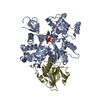
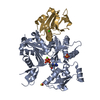
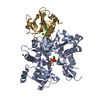

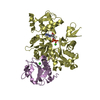
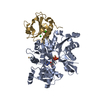
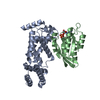
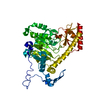

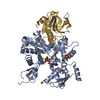
 PDBj
PDBj















